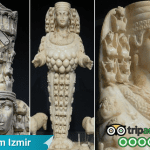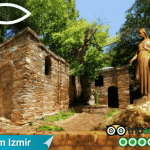Quick Overview
Harbour Street in Ephesus, also called the Arcadian Street, stretched 500 meters from the Grand Theater to the harbour of Ephesus. Built in the 1st century B.C. and restored under Emperor Arcadius, it was 11 meters wide and mainly used for ceremonies and welcoming dignitaries such as emperors and governors. The north side was used for sports, while the south side had shops behind colonnades. Once the harbour silted up, the street lost importance and fell outside the city’s limits. Inscriptions found here reveal details of daily life, trade taxes, and official fees, offering unique insight into Roman-era Ephesus.
Table of Contents
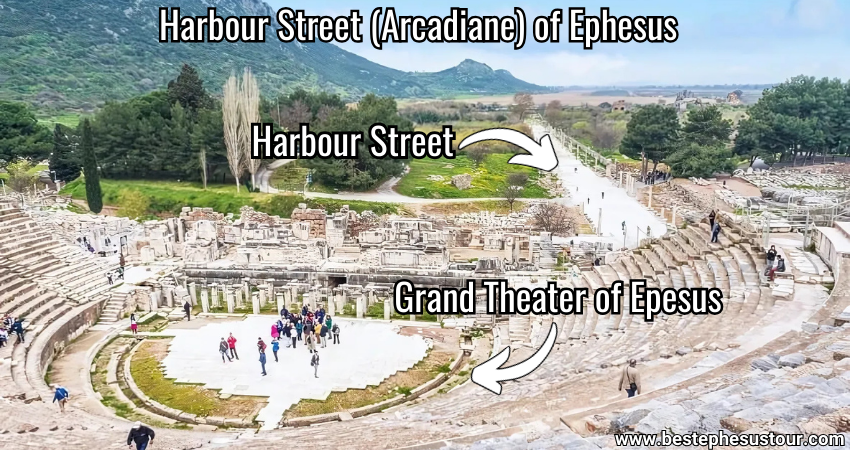
Origins and Construction
The 500-meter-long road that connects the Grand Theater to the ancient harbour of Ephesus is known as Harbor Street, or Arcadian Street. Originally constructed in the 1st century BC, it reached its final form during the reign of Emperor Arcadius in the 5th century AD, which is how it got the name “Arcadian Street.” During the reign of Emperor Arcadius (395–408 A.D.), it was restored and expanded with marble paving, monumental colonnades, and statues. The road measures 11 meters wide and was designed not only for practical use but also for ceremonial purposes.
Ceremonial Significance
Harbour Road played an important role in welcoming distinguished guests. Travelers arriving from overseas entered the city through this grand avenue, while roads from inner Anatolia also connected here. Emperors, governors, and other high-ranking officials were welcomed and sent off along this impressive street, making it a central stage for public ceremonies.
Religious and Social Significance
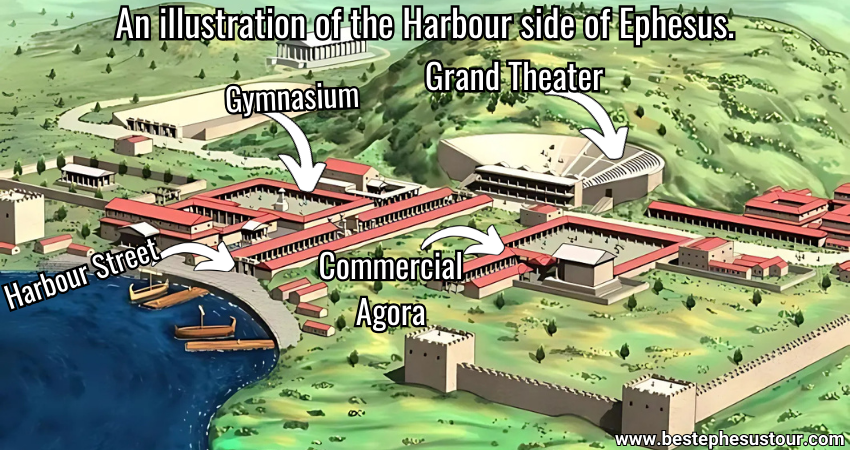
The Arcadian Way also had profound religious and social associations. Pilgrims traveling to the Temple of Artemis, one of the Seven Wonders of the Ancient World, or attending Christian gatherings during the early Byzantine era, passed through this street. Later, with the rise of Christianity in Ephesus, the road witnessed processions linked to the Council of Ephesus in 431 A.D., where significant theological debates took place.
Layout and Architecture
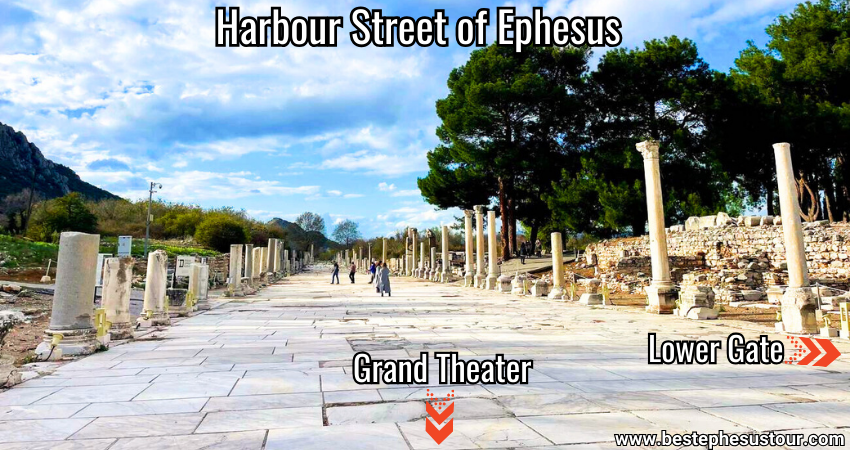
The northern side of the street was reserved for sports areas, while the southern side featured rows of shops located behind covered colonnades. The walls visible today behind these shops date to a later period when the city of Ephesus was shrinking. By this time, the harbour had already silted up, and Harbour Street gradually lost its importance, eventually lying outside the city’s reduced boundaries.
Lighting and Monuments
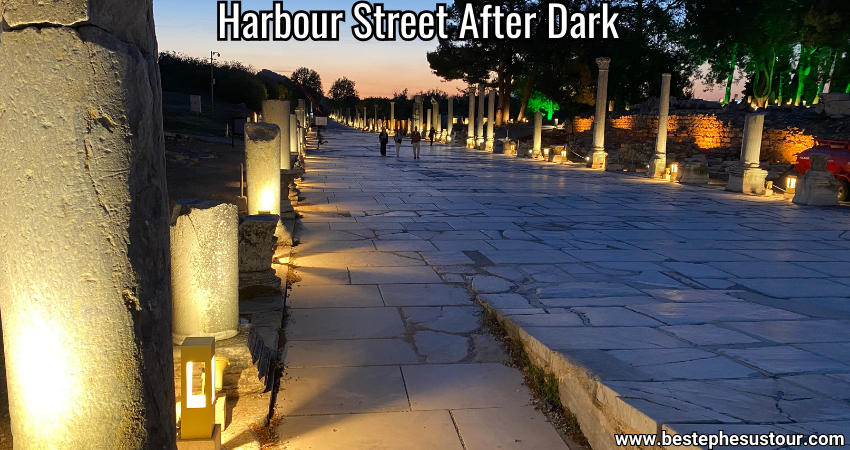
One of the most remarkable features of Harbour Street was its lighting system. During the Roman period, only a few cities, Rome, Antioch, and Ephesus, had illuminated streets. Harbor Street was lit with lamps, making it a unique and rare sight in the ancient world.
At its ends, the road was once marked by monumental gates, one near the theater and another at the harbour, though these no longer survive. In the center of the road stood four distinct columns that likely supported statues. Their pedestals remain visible today.
Rediscovery and Excavations
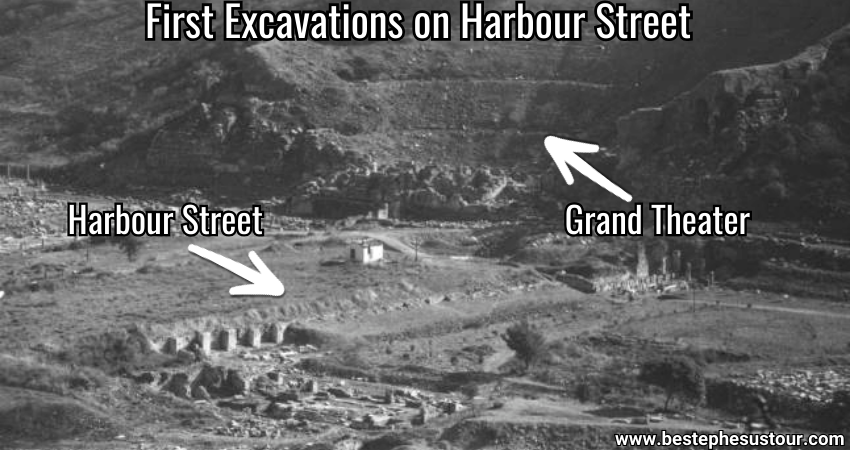
The remains of the Arcadian Way were uncovered during archaeological excavations in the late 19th and 20th centuries. Especially the inscriptions discovered during the excavations provide us with valuable information on trade in Ephesus.
Inscriptions and Fees
Inscriptions discovered along Harbour Road provide fascinating insights into daily life, trade, and administrative practices. One inscription records the fees charged for various formal procedures:
- Selling parsley – 1 denarius
- Salt of sale – 1 denarius
- Race champion’s prize – 6 denarii
- Birth certificate – 1 denarius (100 denarii if the mother was Roman)
These details reflect the structured organization and regulation of civic life in ancient Ephesus.




